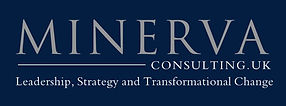
Leadership in the Digital Age and a (Digital) Transformation Strategy:
Connecting People, Systems and Structure Effectively
For a copy of an integrated practitioner and academic rationale for and description of ‘leadership and structural agility’, please ask for our white paper derived from Jeremy Tozer's doctoral research .
Digital Business: Transformation Strategy
To achieve strategic business objectives, organizations will need to develop and embed transformation capability; and such a strategy may be emergent. It will have three distinct components: Information and Communication Technology (ICT) Systems, Leadership Agility, and Structural Agility which interplay within 'context'.
Context
All activity takes place within a context; the external competitive or market landscape. An 'intelligence system' to 'horizon scan', assess competitor and cyber/digital threats and opportunities, and provide timely intelligence (processed information) to inform decision making and evolve strategy, is a necessary extension to the traditional work of marketing and IT departments. We can assist you in developing an 'intelligence system' that works through the four stages of the intelligence cycle: direction, collection, processing, and dissemination of the intelligence 'product'.
Leadership Agility
Business performance in VUCA conditions depends upon regularly reviewing context, strategy and execution progress. Strategy will evolve to ensure that that which is strategically desirable, is tactically possible.
The approach to strategy execution and evolution needs to ensure people’s emotional engagement in the task at hand and 'clarity', the alignment of thinking, priorities and processes to strategy, on a dynamic and systemic basis. VUCA and digital disruption may mean that strategy is emergent which necessitates planned experiments, acceptance of risk, and iterative ‘clarity creating’ leadership practices and agile sprints.
On top of this, a strategy execution 'system' and its leadership 'practices' must enable and support collaborative and creative remote working.
To make all this both efficient and effective, a ‘system’ of decentralised decision-making, dynamic delegation and review, distributed leaders (leaders have responsibility for people, their task assignments and their outputs throughout the enterprise), and shared leadership (the leader can’t do everything alone and needs the skills, expertise and time of others) is required.
The leadership practices which create ‘clarity and alignment’, when applied with emotionally intelligent appropriate, adaptable and authentic leadership behaviour, secure emotional engagement in and commitment to decisions and tasks. Effective leaders create a psychologically safe environment which allows people to concentrate on the task at hand.

Organizational structures are decision-making systems for breaking ‘the big task’ into smaller parallel, layered and sequential sub-tasks to be achieved. Those aggregated achievements demonstrate to what extent ‘the big task’ has been realised. Structure can help or hinder how decisions are informed and made, and how co-ordination and collaboration across boundaries are enabled. The absence of 'role-relationship' clarity can result in gaps or duplication in assumed roles as people are influenced by 'performance management systems' and 'politics' to make the system work to their best advantage.
Given the increasingly 'project based' nature of work spanning multiple teams and crossing boundaries; organizations need an agile approach to organization structure and individual role design — a system which may be applied quickly as new partnerships are formed and new tasks undertaken.
We help you to clarify your thinking about the role and responsibilities of distributed leaders, the nature of shared leadership, and the definition of role relationships. We enable your leaders to understand and apply the principles of organization design in leadership team workshops and provide you with a toolkit, coaching, consultancy support and advice to support building structural agility.
ICT Systems and Software
We are not expert in Information and Communication Technologies themselves (ICT); however ICT is clearly a component of a digital leadership strategy and we have extensive and proven experience of facilitating ICT decision-making and in developing ICT leaders and ICT departmental strategy execution and change capability. The key point to make is that ICT is a tool to be used by people effectively; rather than a platform which people become servants of; ICT deployment must support desired behaviour and not shape it so ICT design requires careful thought in the same way that organization design does. We facilitate the definition of user requirements and enable change to new systems, processes and protocols.
Let's have a conversation and please do ask for our digital transformation strategy white paper.